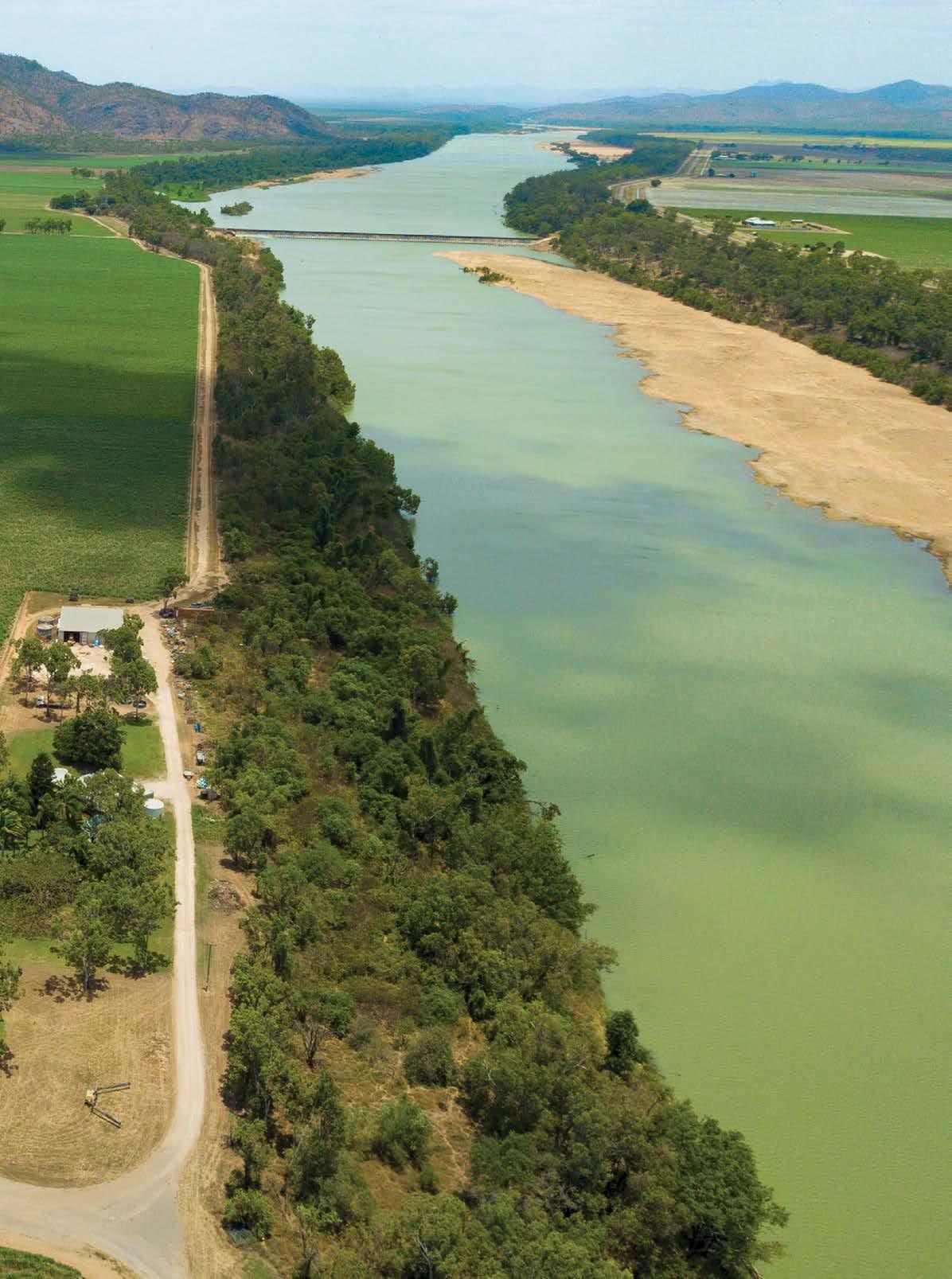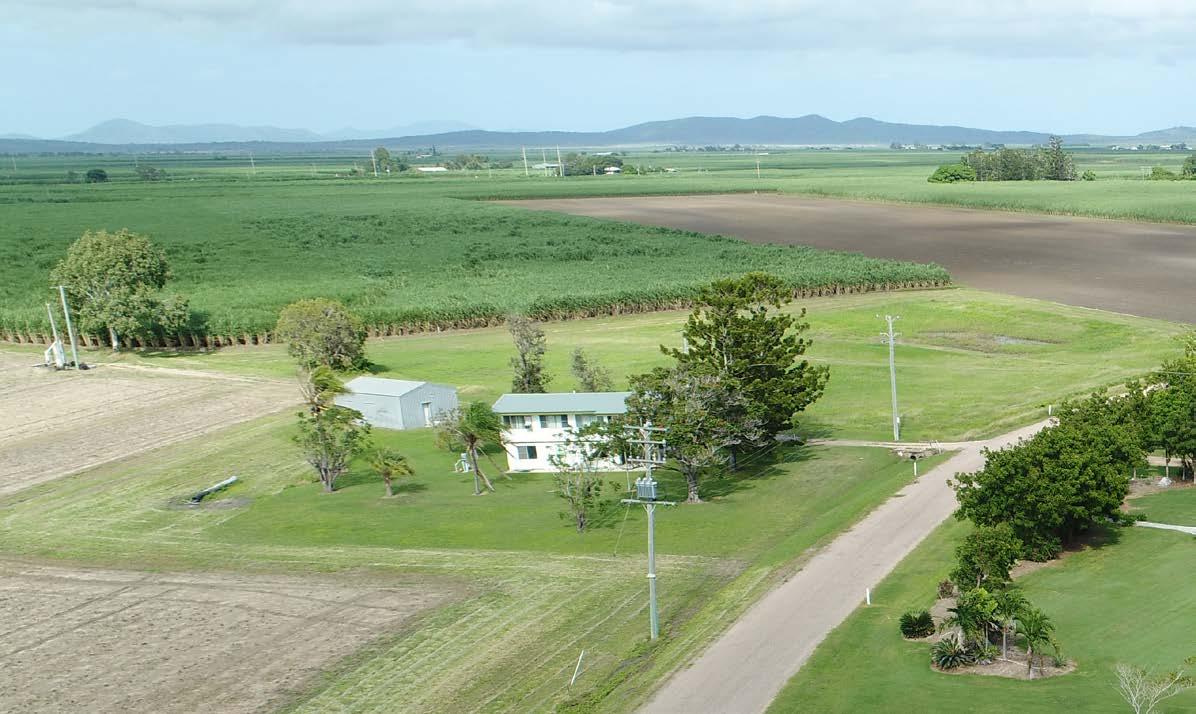
6 minute read
Myth-busing Reef water quality policy
Myth-busting Reef WATER QUALITY
Queensland's sugarcane growers have consistently demonstrated a strong commitment to improving farm practices for both productivity and sustainability. CANEGROWERS supports efforts to understand and, where necessary, better manage the interaction between farming, water quality in Great Barrier Reef catchments and the health of ecosystems in the Reef lagoon. But government targets for Reef water quality and the farm practice criteria and reporting methods involved have set growers up for failure. Some of the major flaws underpinning government policies, programs and targets for water quality are listed here. These are the pernicious and persistent myths that offend CANEGROWERS and its members and subject the industry to increasing levels of regulation.
Advertisement
MYTH 1: "We are on the same page about what is ‘best practice’"
BUSTED: If only! How the Federal and Queensland governments want growers to manage nutrients, or other aspects of farming, is defined under their Paddock to Reef modelling program. This program’s criteria for defining practice standards are often at odds with what the industry defines as best practice, as described in the Smartcane BMP program which is based on science, including agronomic research undertaken by Sugar Research Australia in collaboration with growers. For example, Smartcane BMP requires growers to use the SIX EASY STEPS (6ES) program for estimating the nutrient needs of their crop, with any refinement of this to be based on leaf analysis, strip trials or guidance in SRA’s 6ES toolbox. However, to qualify for best practice (B standard) in the Paddock to Reef program, a grower needs to use nitrogen (N) rates derived from the Block Yield method. This means using N rates that are up to 30% below industry best practice 6ES. There is no evidence to support use of the Block Yield method by growers. Quite the opposite. A recent CANEGROWERS analysis found there would be huge costs to growers and regional economies from widespread adoption of this B standard practice for nitrogen management. The Queensland Government based its justification for the additional 2019 regulations on the impact of the Block Yield method on water quality (while assuming it would not affect yield!). However, the Federal Government also uses the B practice standard as the outcome required from its reef incentive programs. This includes the projects currently being funded or considered by the Great Barrier Reef Foundation, on behalf of the Federal Government.
This leads on to the next myth…
MYTH 2: "It is all about the Queensland Government"
BUSTED: We wish! The Federal and Queensland governments are partners in the Reef 2050 Long-Term Sustainability Plan, which is their strategy for protecting and managing the Great Barrier Reef. All the policies and programs from both levels of government are based on this plan, including the regulations imposed by the Queensland Government. In fact, the recently updated Reef Plan includes the following statement as one of the key achievements of this Federal-State partnership: “On 1 December 2019, new Queensland regulations came into effect to enhance water quality outcomes by tackling all land-based sources of water pollution to the Reef.” Both levels of government have also set a target of: “90% of agricultural land in priority areas managed using best management practice for water quality outcomes”. For growers, this requires the B standard in Paddock to Reef, i.e. the Block Yield method for nitrogen rates explained in Myth 1. It is hard to overstate the level of crossgovernment political and bureaucratic investment in the existing Reef plans and policies. Consequently, there is strong resistance to any questioning of the rationale, soundness or effectiveness of the plans and policies. This is a great shame given the intent of our questioning is to make the plan and its policies more credible and relevant to growers.
WATER QUALITY policy
MYTH 3: "Water quality report cards are representative of growers’ efforts"
BUSTED: Not so! The assumptions and calculations behind these report cards are complex and muddy (if you will forgive the pun), which is perhaps one of the reasons why the quality of the report’s graphics are not matched by the level of growers’ regard for the report’s messages. One of the many issues with these report cards is the relatively small data set on which they rely. It uses questionnaire responses on fertiliser rates, yields, etc. from growers who (1) have been involved in a recent reef-funded project (reporting is a condition of such projects), and (2) have made some relevant change in farm practice as a result of that project. This means that any change in practice for a region, and the corresponding modelled effect on progress towards reef water quality goals, is based on a relatively small number of growers and only on recent practice changes. If the grower had improved a practice several years beforehand, such as using the 6ES program or having groundcover during the fallow period, that data would not qualify for inclusion. The reasons for this are complex but relate to when the report card sets its nominal baseline of practice standards for each region. It is in industry’s interest to get reliable data into these systems, but first we need to have confidence that the reporting system properly considers the merit of practices for both water quality and profit, and that the water quality targets are consistent with an economically viable industry. We have seen that its practice framework for nutrient governments want an 80% reduction
management is spurious. What about the water quality targets?

MYTH 4: “The water quality targets are realistic and sensible”
BUSTED: Off-target! A realistic target is defined as one which you can sensibly expect to achieve. The Federal and State This leads on to the next myth…
in the amount of dissolved inorganic nitrogen that leaves farms. But there is no roadmap for how this can be sensibly achieved. The sugarcane industry takes all the pressure for this target but has never been consulted about what sort of reduction is practically achievable while keeping a viable industry. Also missing from the discussion is a measure of the benefit to inshore marine ecosystems from any reduced loss of DIN from farms. For example, what if we get half-way towards the target – will we see a proportional improvement in the health or recovery rate of inner shore reefs? Or are the claimed benefits of declining discharge of DIN for the inner reef just a possibility that cannot be expressed as a series of statistical probabilities?
WHAT IS CANEGROWERS DOING TO GET THESE ISSUES SORTED?
3
3
3
3 CANEGROWERS is demanding that the Federal and State governments undertake an urgent review, with industry, of their Reef Water Quality Plan including the Paddock to Reef and Report Card programs. The practice frameworks and water quality targets must be evidence-based and practical, so that growers will not be expected to suffer economic losses. And there must be a fair and comprehensive system for recognising and reporting growers’ achievements. If this review is not undertaken during the first months of 2021, CANEGROWERS will develop its own strategy for water quality, with realistic, industry-specific targets and a fair and comprehensive reporting system based on our Smartcane BMP program. CANEGROWERS is insisting that any new on-ground water quality projects funded by the Federal or State Governments have local growers as full participants. CANEGROWERS is calling for an overhaul of both, (1) the system for managing and scrutinising water quality research, and (2) the synthesis and communication process by which the combined research outputs influence government policy and programs.










